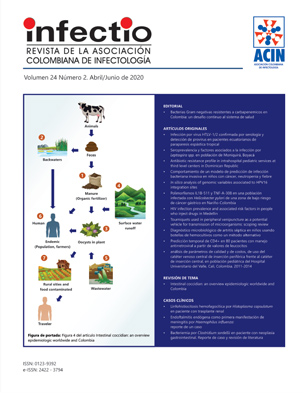HIV infection prevalence and associated risk factors in people who inject drugs in Medellin
Contenido principal del artículo
Resumen
Introduction: the availability of high purity and low-cost drugs has increased the use of intravenous substances, which makes it a public health problem due to its
association with HIV infection. Objective: to identify the factors associated with HIV infection in people who inject drugs. Materials and methods: a cross-sectional descriptive study was carried out between December 2017 and January 2018 in Medellin, Colombia. We use the sampling conducted by the respondent (RDS).
Results: They have recruited 224 subjects, 86.2% were men, 82.0% were single and 67.0% belonged to the subsidized or linked health system. The prevalence of
HIV infection was 3.6%. This study found that 38.8% of consumers have shared needles and syringes with up to three people, representing a risk of infection of
5.07 times, compared to those who do not share (RPc = 5.07 95% CI: 1.19-21.55), and if this practice is carried out with a close friend, the probability increases to
almost double (10.69) (RPc = 10.69 IC 95%: 2.26-50.61) (p <0.05). Conclusion: Given the low prevalence of HIV, it is vital to develop and implement public policies whose objective is to create prevention programs that ultimately lead to the reduction of infection in this population.

